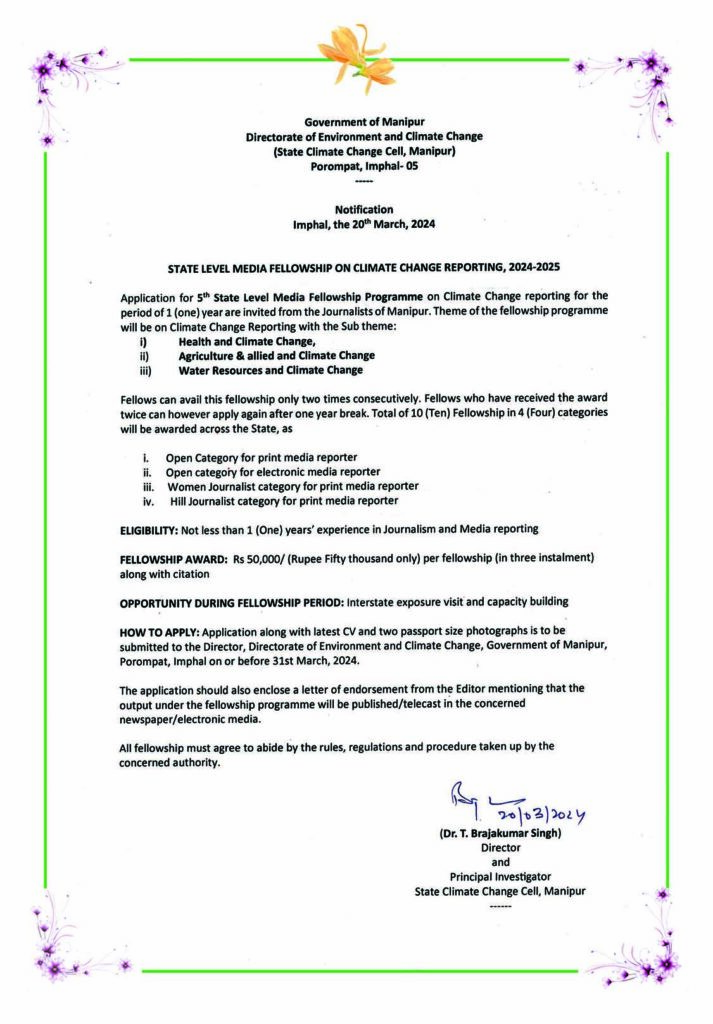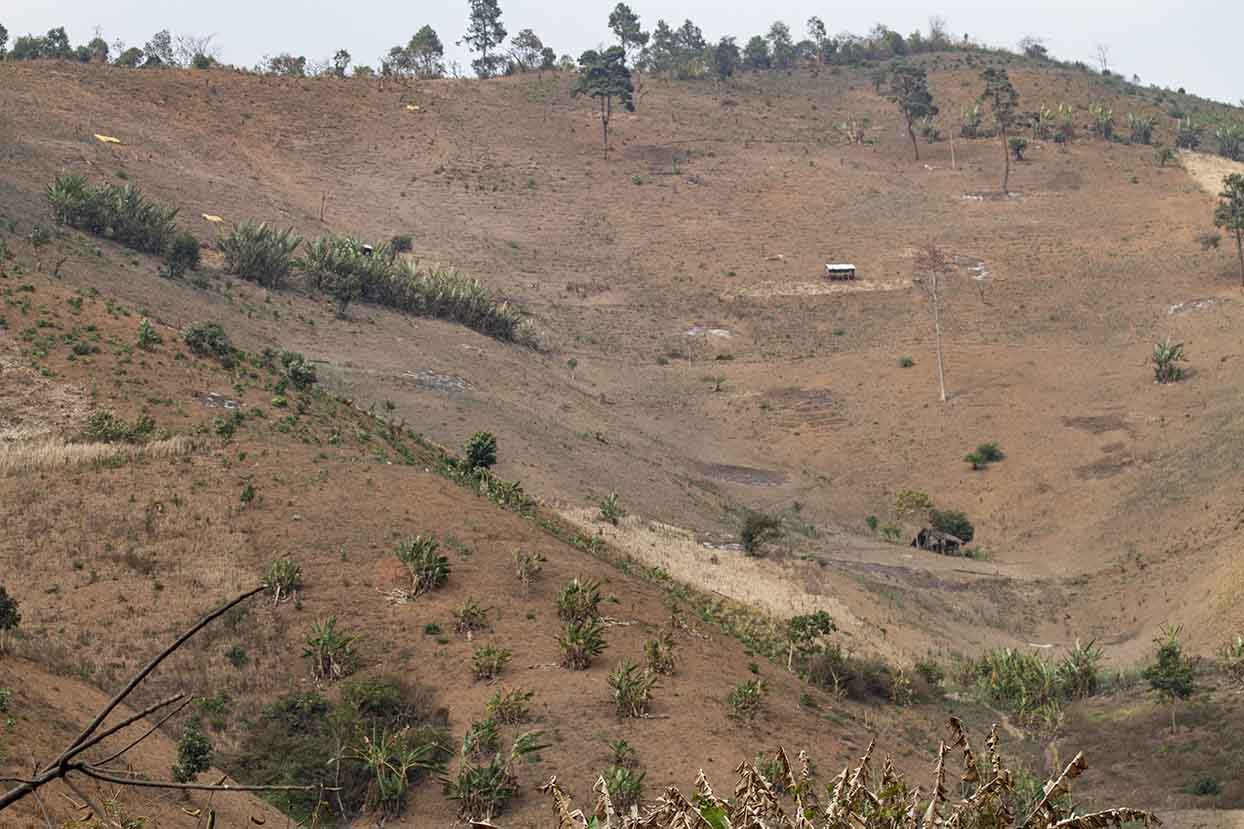The fallacy in the often-used argument that something which has worked for the forefathers will work for the present is the inherent refusal to acknowledge that times change and together with it, quite inevitably, the physical world as well, sometimes for the good and at other times for the worse. In other words, past strategies can work but it does not necessarily have to. This thought is prompted by chatters on social media recently on the matter of swidden agricultural practices of jhum or slash and burn shift agriculture, in certain hill areas of Manipur – or as James C. Scott noted in his important book “Art of Not Being Governed: An Anarchic History of Upland South East Asia” – in the entire region that he and another Dutch scholar Willem Schendel called Zomia, constituting of the mountainous massifs of upper SE Asia punctuated by many small alluvial river valleys. A great part of the Northeast region would certainly be part of this unique geo-political region the two imagined.
Considerable number of research works now exist on this agricultural practice. The general conclusion is, when population was small, therefore rotational cycles of these jhum fields could be spaced out enough to about 15 years, whatever damage the practice inflicts on the soil or forest vegetation, can regenerate comfortably. However, as population grows, things change. For one, there will have to be an incrementally larger forest areas cleared for more jhum activities and together with it, as land areas available are not unlimited, the rotational cycles of jhum fields also have to be incrementally shorter, leaving not enough time for these fields to regenerate and regain their original fertility. When this pressure on land gets too intense and expansive, slow desertification can be the result. Those who love adventure drives and nature camping will vouch, this does sadly seem to be happening even in many areas of Manipur hills. Together with such denuding of hillsides comes depletion and sometimes disappearances of life giving springs and other water sources making life difficult for those depending on it.
The other problem scholars point out is, yields of swidden agriculture are low therefore unable to support large populations. Because this is so, villages tend to proliferate and keep within limits of support by their agricultural means. Circumstantial evidences of this are also not too rare. Villages which practice wet rice agriculture either in the many narrow river valleys or else on terraced fields on mountainside fed by mountain streams and springs, sometimes with some jhum agriculture as well for additional variety of crops, are generally much bigger than those which have little or no stable wet rice fields and are dependent on jhum crops chiefly. A glance at the census report will confirm this. Poumai villages along the Barak and Iril river basins who have traditionally practiced wet rice agriculture on terraced fields for instance are fewer in number but generally much bigger than most villages of other tribes, even amongst the Nagas, say for instance in Kamjong district. Relative livelihoods stability is also a fortune of the Angamis who are the neighbours of Poumais. In fact, one of the most cited examples of controlled balance between terraced wet rice field and jhum fields is what has come to be known as the Khonoma village model.
A progressive outlook is about a willingness to acknowledge and adapt best practices in any field from others who have seemingly handled a common problem well. Not only this, an openness to interrogate what is already in practice and working with the objective of finding better ways of doing the same thing is what scientific spirit is about. This questioning nature and the resultant perpetual quest for better answers to even things which already have a satisfactory answer is what led to the era of discoveries often referred to as the Enlightenment Age in Europe. Philosopher Karl Popper explains this spirit illustratively in his collection of essays “All Life is Problem Solving”, a Routledge Classic. In the essay bearing the same title as the book, he uses the analogy of an amoeba and a human scientist like Einstein, and identifies the fundamental difference in their problem-solving strategies. For the amoeba a strategy that works becomes it instinctual response to all similar problems. Even if a hurdle comes in the way and foils this strategy, the amoebas’ response will remain as it were even if this means ultimate annihilation. If by accident one or some of the amoeba finds a way to skirt the hurdle, this new strategy will become the response of the entire community and this will remain so until another hurdle comes in the way.
This will contrast with how Einstein solves a problem Popper says. If he works around a problem, that will not be the end of his search, and instead he will begin interrogating his own solution – where its shortfalls are or whether there are other answers, possibly better ones. The probability is, the solution to the problem will keep improving. Many potentially new problems too may even be rendered redundant before they actually surface. In Popper’s words, this is a demonstration of how humans are able to distance themselves from problem solving experiments so that if any of them fails, they do not perish with the experiment. This is unlike the amoeba which becomes part and parcel of their own problem-solving experiments. They also are incapable of anticipating future problems therefore stick to one strategy so long as it works. The obvious danger is, they can perish if the strategy they stick steadfastly fails when a new hurdle surfaces.
Status quo of a given problem solving strategy would have been good if the context of the problem also remained static. This sadly is never the case. In fact, the pace of change and the frequency of newer problems emerging has multiplied in the modern times. From telephone models to new health issues in coping with the modern world, everything is in a constant and accelerating flux. If the phrase “the only thing constant is change” is true, it has to be so today more than at any other age. Let us return to the matter of jhum then. Forget the worries about soil and forest degradation because of shortened jhum cycle for the time being. Let us instead ask honestly if jhum is able to give its practitioners a decent livelihood more than just subsistent living in the changed modern world? Are they comfortable meeting occasional healthcare bills, education for children, possess even the basic requirements of today such as a phone, a locomotive, a TV set etc. If not, why must there be complacency about the status quo? Why must not the quest for better ways be encouraged?
This must not be a blind welcome of any proposal for change, for many questions would remain to be asked. Is terrace cultivation a better and worthwhile option? Would it be suitable for the given terrain, for surely this mode of agriculture must have its own precondition, such as abundance of water. Are there also other agricultural innovations which has worked in similar topography in other parts of the world? What about the Sloping Agricultural Land Technology, SALT, otherwise known as Contour Hedgerow Intercropping (Agroforestry) Technology, CHIAT. This technology, developed by the Mindanao Baptist Rural Life Centre, more known by its sister affiliate Asian Rural Life Development Foundation, ARLDF, on a marginal site in Kinua Kusan, Mindanao Island, in the Philippines, is now showing promise at many locations it has been tried and is now being promoted by the United Nation’s International Centre for Integrated Mountain Development, ICIMOD. In Manipur too, this agriculture technique, projected as a jhum substitute, is being experimented by an NGO in Aben village in Tamenglong district, and the good news is, here too it is showing potential and some more villages nearby have already adopted it. If minds are seriously on these matters, there obviously would be constructive ideas forming. It is then that lobbies can be built at different levels and forums, to persuade the government to enter these ideas into policy planning.
The moot point is, remaining receptive to change without losing balance or stability of past foundation is the way to a resilient future. Those who remain stubbornly stuck to the past, and believe that the so called “time immemorial” traditions are infallible are living in castles in the air. Nothing is infallible, and as history is proof, not even the greatest civilisations. Jared Diamond’s “Collapse: How Societies Choose to Fail or Survive” where he gives an account of how numerous civilisations and thriving societies have disappeared, is a warning to be heeded by all.










